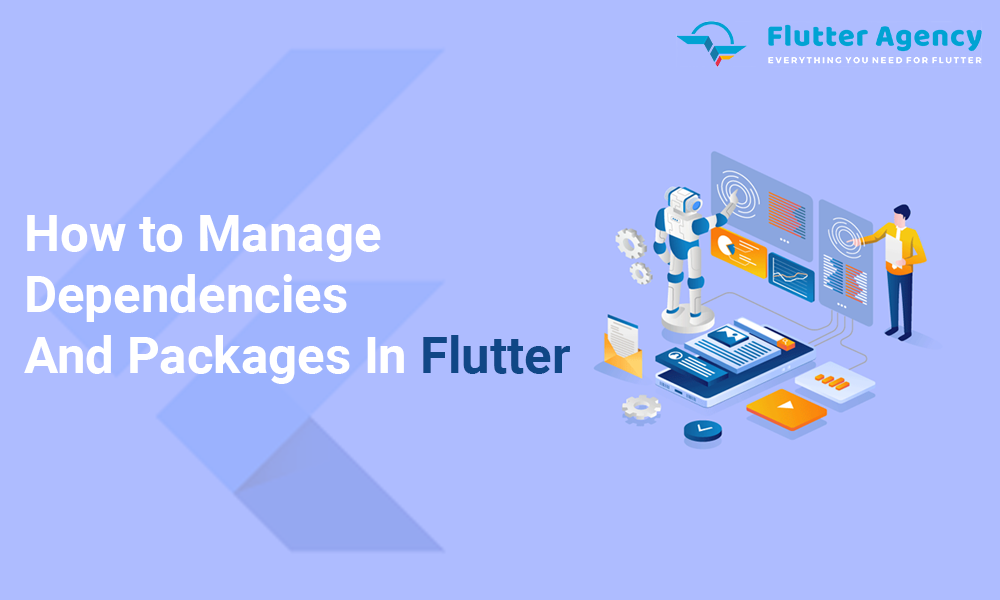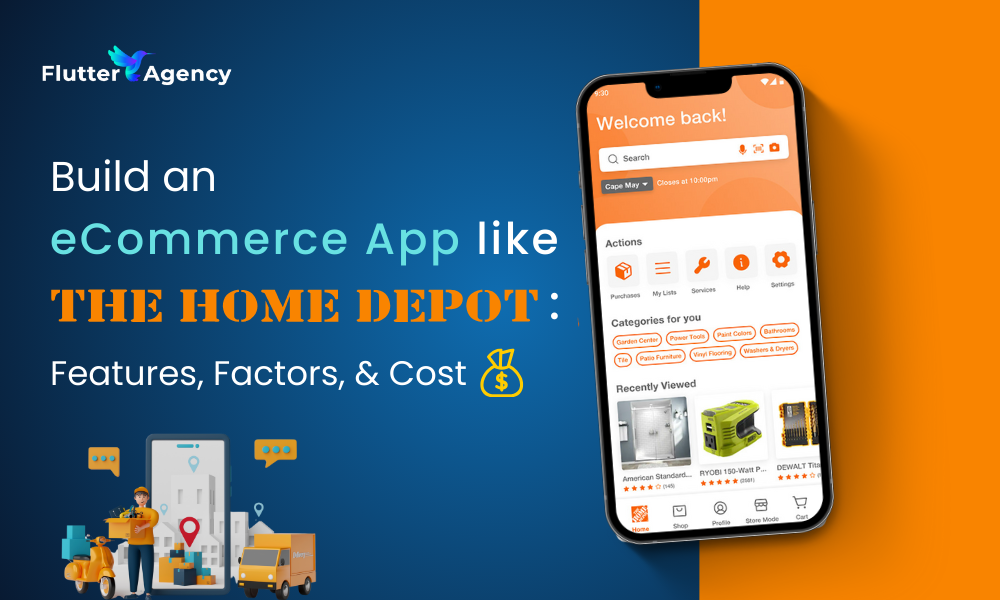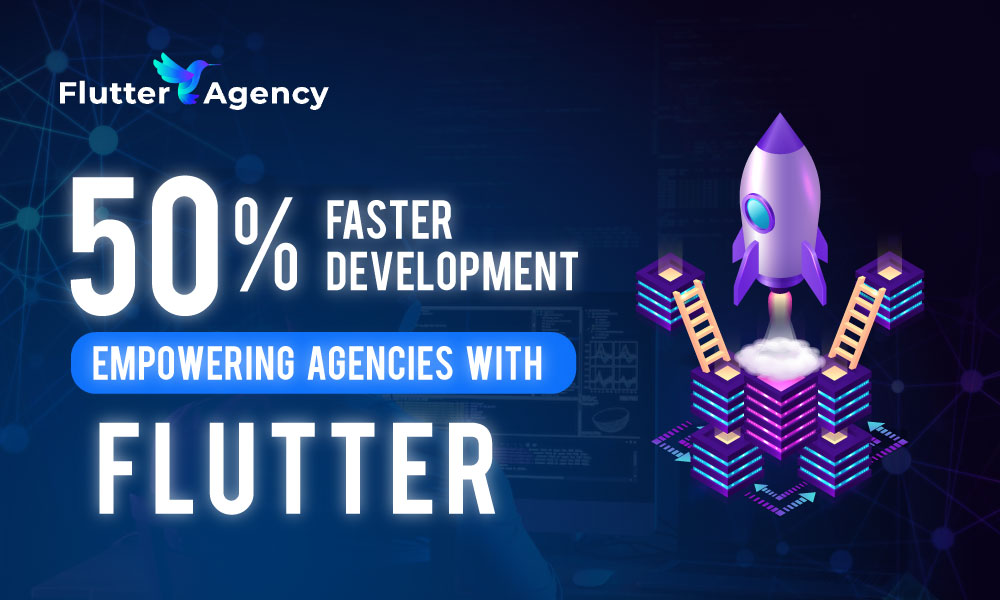Learn How to Manage Dependencies and Packages in Flutter
Flutter is an open-source platform used to develop mobile applications that have recently become quite successful. It offers a wide range of pre-built widgets, tools, and libraries, which makes it easier for developers to create beautiful and feature-rich mobile applications. However, as with any software development project, managing dependencies and packages is critical to a Flutter project. This process involves adding, updating, and removing packages as necessary and ensuring that all the dependencies are compatible. In this blog post, we will discuss how to manage dependencies and packages in Flutter projects and explore some best practices to help you streamline your app development process.
Engaging a package dependency to an app
Adding a package dependency to your Flutter app is a simple process that can greatly enhance the functionality of your app. Packages are pre-written code snippets you can incorporate into your app to add new features or functionality.
1. Identifying the Package
The first step in adding a package dependency is identifying your desired package. Flutter has a vast collection of packages you can use in your app. You can find the packages on the pub.dev website, which is the repository for Dart packages.
2. Adding the package to pubspec.yaml
Once you have identified the package you want, add it to the pubspec.yaml file of your app. The pubspec.yaml file is a configuration file that lists all the dependencies your app requires. To add a new dependency, you need to add the following line to the file:
dependencies: <package_name>: <version>
Replace with the package name you want to add and with the package’s version number.
3. Installing the Package
After adding the package to the pubspec.yaml file, you need to install it. Run the following command in your terminal to install the package:
flutter pub get
This command will download the package and its dependencies and make them available to your app.
4. Importing the package
Once the package has been installed, import it into your app. To do this, you need to add the following line to the dart file where you want to use the package:
import 'package:<package_name>/<package_name>.dart';
Replace with the package name you want to import.
5. Using the package
After importing the package, you can start using it in your app. The exact usage of the package will depend on the package you have added. You can find the usage instructions for each package in the package’s documentation.
Adding a package dependency to your Flutter app is a straightforward process. Following these simple steps, you can easily add new features and functionality to your app.
Eliminating a package dependency on an app
Removing a package dependency from your Flutter app is a straightforward process that can be done with just a few simple steps. Sometimes, a package dependency might not be needed anymore or cause compatibility issues with other dependencies in your app. This article will show how to remove a package dependency from your Flutter app development process.
1. Identifying the Package
The first step in removing a package dependency is identifying the package you want to remove. This can be done by checking the pubspec.yaml file of your app lists all the dependencies your app requires.
2. Removing the package from pubspec.yaml
Once you have identified the package you want to remove, you must remove it from the pubspec.yaml file. To remove a dependency, delete the line in the pubspec.yaml file that refers to the package you want to remove.
3. Removing the Package Import
After removing the package from the pubspec.yaml file, you need to remove the package import from your Dart files. To do this, delete the line in your Dart files that imports the package you want to remove.
4. Updating the Package
After removing the package import, you need to update the app by running the following command in your terminal:
flutter pub get
This command will update the app and remove the Flutter package and its dependencies from your app.
5. Testing the App
Finally, you should test your app to ensure that removing the package dependency has not caused any compatibility issues with other dependencies in your app.
Removing a package dependency from your Flutter app is the simplest process that can be done with just a few simple steps. By following these steps, you can remove packages that are no longer needed or cause compatibility issues with other dependencies in your app.
Conflict resolution
Conflict resolution is an important aspect of managing dependencies in a Flutter project. Conflicts can occur when your app depends on two or more packages with conflicting versions of the same library. We’ll also discuss how to resolve conflicts in Flutter package dependencies.
1. Identifying the Conflicts
The first step in resolving conflicts is to identify the conflicting packages. You can use the Flutter doctor command to check for conflicts in your project. The output of the Flutter doctor command will show you the conflicting packages and the versions of the libraries they depend on.
2. Updating the Package Versions
One way to resolve conflicts is to update the versions of the conflicting packages. If one of the packages has a newer library version, you can update the other package to use the same version. You can update the version of a package by editing the pubspec.yaml file and changing the version number of the package.
3. Pinning the Package Versions
Another way to resolve conflicts is to pin the versions of the conflicting packages. Pinning a version of a package means that you lock the package to a specific version and prevent it from being updated. You can pin a version of a package by adding the version number to the pubspec.yaml file.
Dependencies: <package_name>: <version>
Replace with the name of the package you want to pin and with the package’s version number.
4. Removing the Package
If you cannot resolve the conflict by updating or pinning the versions of the packages, you can remove one of the conflicting packages from your project. Removing a package will eliminate the conflict, but it will also remove the package’s functionality. You should only remove a package as a last resort if the other options are unviable.
Conflicts in Flutter package dependencies can be resolved by updating the package versions, pinning the package versions, or removing the conflicting packages. By following these steps, you can ensure that your project continues to work as expected and that your dependencies are well-managed.
Dependencies on unpublished packages
Dependencies are a crucial part of software development. They help programmers to save time and effort by using existing libraries and packages instead of writing code from scratch. However, when it comes to using dependencies on unpublished packages, there are some important considerations to remember.
Unpublished packages are packages that are not officially released and are not available in the public repository. These packages are usually in the development stage and can contain bugs, security vulnerabilities, and other issues. For this reason, using unpublished packages in a production environment is not recommended.
Despite the potential risks, some developers use unpublished packages in their projects. This can be because they are experimenting with new features or trying to fix a bug that is not yet fixed in the official version of the package.
To use an unpublished package in a Flutter project, you must add it as a dependency in your pubspec.yaml file. For example, you have an unpublished package called “my_package” that you want to use in your Flutter project. You would add the following code to your pubspec.yaml file:
dependencies:
my_package:
git:
url: git://github.com/username/my_package.git
ref: my_branch
The git property specifies the URL of the Git repository that contains the unpublished package, and the ref property specifies the branch that contains the code you want to use.
It’s important to note that when you use an unpublished package, you rely on the Flutter development team to maintain and update it. If the package is no longer maintained or the developer stops working on it, you will be stuck with an outdated and potentially broken dependency in your project.
Using unpublished packages in Flutter can be a great way to access new features or fix bugs before they are officially released. However, it’s important to be aware of the risks and use them only in non-production environments. Before using an unpublished package, thoroughly research the package and the developer, and always keep a backup of your project if something goes wrong.

Conclusion
In conclusion, dependencies play a crucial role in software development and can help developers save time and effort using existing libraries and packages. When adding a package dependency to a Flutter app, following the proper steps and managing your dependencies to avoid conflicts is important. Using unpublished packages can be useful for accessing new features or fixing bugs. Still, it’s important to consider the risks involved and thoroughly research the package and developer. By following these guidelines, you can ensure that your Flutter app remains functional and well-maintained.
At Flutter Agency, we recommend staying up to date with the latest Flutter updates and releases, using version control systems like Git, and utilizing package management tools like Pub. By keeping these practices in mind and following the guidelines set forth by the Flutter community; you can effectively manage dependencies and packages in your Flutter projects and deliver superior mobile applications that are tailored to your users’ needs.
Frequently Asked Questions (FAQs)
1. Define dependency management in Flutter.
Dependency manager is the approach to various repositories as the code base grows in an environment where you develop several applications. Thus, the normal dependencies are shared across the projects.
2. How to resolve the conflict in Flutter dependencies?
You must match the plugin and project versions for this or change the dependency in the pubspec.yaml file. But in iOS, Flutter is not giving any configuration for conflict resolution.
3. Why is dependency used in apps?
The only code that utilizes dependency directly is the one that insanities an object of the particular class, which integrates the interface. A dependency injection technique enables you to improvise rapidly. Thus, it gives the method to separate the creation of the object from the usage.
Contemporary ventures
Recent blog
ready to get started?
Fill out the form below and we will be in touch soon!
"*" indicates required fields









